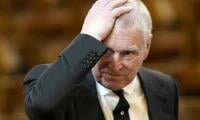Institutional imbalances
The Supreme Court’s decision to disqualify a sitting prime minister has triggered debate on issues involving civilian rule, constitutionalism and institutional imbalances. Pro-establishment intellectuals and analysts have blamed politicians while the political elite have, in turn, pinned the blame on military dictators for this imbalance.
The dominant narrative on this question is a rather superficial overview of the historical development of colonial state structures. This is also linked with the reconstruction of the economic and social structures initiated by British imperialism after the War of Independence in 1857. The faultline of institutional imbalances that we witness today lies in the reconstruction of the modern state structure and society.
The biggest crime committed during British imperialism in India was the effort to establish and legalise feudalism. The British also reconstructed and strengthened the tribal system. Both feudal and tribal chiefs provided the much-needed social basis to the British to complete their imperialist project. Back home, Britain’s ruling class had abolished feudalism to establish a modern capitalist nation-state and a democratic order. But in India, they did the opposite.
Feudalism never existed in India as a social and economic system in its classical form. An analysis of the historical development of economic and social relations and the modes of production is necessary to draw the correct conclusions (I will deal with this question in the next article).
One has to take into account the fact that the imperialist project to construct a modern state structure began in 1860s and was almost completed in the last decade of the 19th century. Efforts to incorporate the local civil and military bureaucracy started long before the emergence of indigenous political leaders. When the political and trade union movement started to emerge in the 1920s to challenge imperialist occupation and economic exploitation, the colonial state structure was already in place to deal with it.
So, we inherited the institutional imbalance in 1947. This imbalance existed by default and design. We inherited a weak ruling class that mainly consisted of Muslim feudal lords, ex-officials of different princely states, Muslim traders, a few petty capitalists and ex-civil servants. On the other hand, the civil and military bureaucracy was well-trained, experienced and disciplined as compared to the civilian ruling class.
The continued intervention and domination of the American imperialism also played a destabilising role. American imperialism encouraged military domination and various degrees of intervention to weaken the civilian institutions. A vast majority of the ruling class comprised feudal lords from Punjab and Sindh and tribal chiefs from Balochistan and NWFP (now Khyber Pakhtunkhwa).
The ruling class was frightened of the consequences of general elections. The lack of public support forced them to form an alliance with the civil and military establishment. This alliance resulted in the establishment’s intervention in politics. Alienated from the people, the ruling elite consequently became dependent on the establishment to gain power. The already strong civil bureaucracy became more powerful. Nearly a dozen prime ministers were appointed and removed over the span of just 10 years.
The establishment took full advantage of the weakness of politicians and the ruling class and became a dominating factor in politics. The judiciary also sided with the bureaucracy and a powerful nexus developed that played an important role in the future.
The strengthening of the military and the bureaucracy increased the institutional imbalance in Pakistan. In October 1958, the military, under General Ayub Khan, assumed political power by imposing martial law. The military ruled the country with the support of the bureaucracy. It was able to cultivate the support of a section of the political leaders.
Since then, the military assumed political power three more times and overwhelmed the political, economic and social processes in the country.
Now we have a situation where different state institutions have started to take each other on. Different sections of the ruling class are fighting to control the state apparatus and different institutions are striving to expand their domains. Democracy has provided them an opportunity to function freely.
Traditionally, the judiciary in Pakistan has sided with the military and provided a legal cover to its attempts to take over the state’s powers. Now, the superior judiciary is attempting to retrieve the initiative it lost to the military. The superior judiciary’s effort to expand its domain of authority has put strains on the executive and the legislature. It is using its constitutional powers to focus on the lapses of the government.
The dysfunctional – or rather malfunctioning – state apparatus at the local level and the pathetic attitude of the local administration has further eroded the civilian authority.
The fact remains that both civilian and military rulers have never seriously undertaken the project of national reconstruction. Nobody has tried to make the necessary corrections to balance the inherited imbalances. Zulfikar Ali Bhutto got the opportunity to fix this problem. But he failed to abolish feudalism and tribalism and give rise to an indigenous political leadership that was firmly entrenched in the people. Instead, he attacked the newly-emerged capitalist elite so as to weaken it. The presence of feudalism, big landlords and tribalism is the main faultline in the political imbalance.
Democracy will never be able to take root among the people if the medieval social and economic structures are not abolished. The people are the real custodians and protectors of the democratic order. But they only fight for it when they benefit from it.
The writer is a freelance journalist.
-
 Spotify Introduces New Monthly Subscription Pricing Plan For 2026
Spotify Introduces New Monthly Subscription Pricing Plan For 2026 -
 Shocking Prediction About Meghan Markle's Career In 2026
Shocking Prediction About Meghan Markle's Career In 2026 -
 Kate Middleton Hosts Reception In London As Prince William Out On Engagement
Kate Middleton Hosts Reception In London As Prince William Out On Engagement -
 Mel C Teases 'precious' Future Plans
Mel C Teases 'precious' Future Plans -
 Teyana Taylor On Julia Roberts Telling Her To 'eat A Sandwich' At Golden Globes: 'Started Crying'
Teyana Taylor On Julia Roberts Telling Her To 'eat A Sandwich' At Golden Globes: 'Started Crying' -
 Minneapolis: ICE Officer Fires Bullet After Migrant Attacks With A Shovel
Minneapolis: ICE Officer Fires Bullet After Migrant Attacks With A Shovel -
 Prince William Gets 'mobbed' By Animals During Rural Engagement
Prince William Gets 'mobbed' By Animals During Rural Engagement -
 Angelina Jolie Finally Escaping L.A.?
Angelina Jolie Finally Escaping L.A.? -
 Matthew McConaughey Takes Legal Action To Save THIS Iconic Phrase From AI Misuse
Matthew McConaughey Takes Legal Action To Save THIS Iconic Phrase From AI Misuse -
 Jodie Foster Reflects On Harsh Reality Of Why She Escaped Sexual Abuse As Actress
Jodie Foster Reflects On Harsh Reality Of Why She Escaped Sexual Abuse As Actress -
 Prince Harry, Meghan Markle To Have Baby In 2026?
Prince Harry, Meghan Markle To Have Baby In 2026? -
 Bella Hadid Steals The Spotlight At 'The Beauty' Premiere
Bella Hadid Steals The Spotlight At 'The Beauty' Premiere -
 Taylor Swift 'worst Photos': Singer's Not-so-perfect Moments Spark Debate
Taylor Swift 'worst Photos': Singer's Not-so-perfect Moments Spark Debate -
 Arizona Mother Traces Missing Son Living In Neighbour’s Home After Killing Hm
Arizona Mother Traces Missing Son Living In Neighbour’s Home After Killing Hm -
 OpenAI Launches ChatGPT Translate To Rival Google Translate
OpenAI Launches ChatGPT Translate To Rival Google Translate -
 Top AI Themes Poised To Shape 2026: Here’s How
Top AI Themes Poised To Shape 2026: Here’s How



